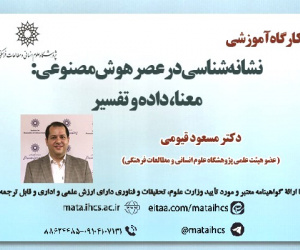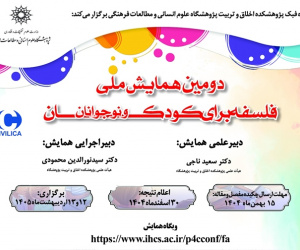مکان، روح مقاومت و ملت
آرشیو
چکیده
جنگ دوازده روزه اسرائیل و امریکا علیه ایران، برکات زیادی داشت. خسارت های آن اگرچه زیاد بود، اما به مصداق آیه «اِنَّ مَعَ العُسرِ یُسری» و قضیه جامعه شناسانه «فرصت ها از دل بحران ها می روید» جهان ایرانیان را به دو بخش قبل و پس از جنگ تقسیم کرد. در وصف برکات جنگ، تقریباً همه تحلیل گران ایران دوست در این نکته مشترک بودند که «وحدت ملی» مردم از ارکان مقاومت ملت و شکست طمع بیگانگان بود. وحدت، فعل جامعه بود که با پذیرش و مشارکت افراد و آحاد آن به دست آمد. نکته اما، زمینه وحدت بود که در این جنگ حول «مکان» برقرار شد. مکان، وطن ایرانیان بود که در هزاره ها در آن جا زیسته و در رویدادهای آن شریک بوده اند. نسل حاضر، میراث دار زبان، فرهنگ، اندیشه، ذهنیت و سایر دستاوردهای جامعه ایران بر بستر وطن است. اگر نمی توان میان ایرانیان حاضر با گذشته آنها خط فاصله واضحی تعیین کرد، از این روست که همه صفات و توان امروز دنباله گذشته آنان است و هر چیز نو نیز یا تحول یافته امر قدیم است یا پاسخ و پذیرش ایرانی امروز با خصوصیت و اندیشه خود به پدیده نو. در هر صورت آنچه جامعه امروز ایران را به عنوان یک ماهیت ممتاز و قابل تشخیص از دیگران معرفی می کند، هویت یا امتداد صفات تاریخی آن در بُعد زمان است. در جنگ با عراق، آنچه محور وحدت ایرانیان بود، در کنار وطن و مکان، دفاع از انقلاب جوان و آرمان های اسلامی آن هم بود. در جنگ دوازده روزه اما، به دلایل مختلف از جمله غافلگیری وقوع آن، پراکندگی دیدگاه های سیاسی جامعه، کوتاهی و ضربتی بودن شروع و پایان جنگ، فرصت برای ظهور عوامل دیگری برای وحدت جامعه فراهم نبود. اما وحدت به شکل باورناپذیری حول مفهوم وطن که نمونه برجسته ای از مکان و منظر است، شکل گرفت. اینکه پدیده مکان اولین، عام ترین و قوی ترین محور اتحاد در جامعه باشد، باید چشم ها و دل ها را به ظرفیت های مغفول آن باز کند. روشن است که دلبستگی مردمی که جمع کثیری از آنها ناراضی از شرایط سیاسی جامعه هستند، به وطن موجب همراهی با حاکمیت در تقویت موضع او باشد، کشف مهمی بود که از جنگ دوازده روزه به دست آمد. به نظر می رسد که ظهور مفهوم مکان به مثابه عنصر اولیه، مورد وفاق و پر قدرت برای وحدت جامعه و فرصتی برای حاکمیت و علی الخصوص بخش های تخصصی آن در حوزه مکان و منظر است تا به آن دوباره بپردازند. دانشگاه ها، مفهوم مکان را جانشین فیزیک فضا کنند و با تبیین ابعاد درهم تنیده عینی و ذهنی آن، اذهان کارشناسان را به قابلیت ها و ظرفیت های آن هدایت کنند. برنامه ریزان و مدیران مرتبط با مقوله فضا، مفهوم سرزمین را جانشین محیط زیست، منابع طبیعی، زمین، مسکن و محوطه های میراثی کنند. بدانند آنچه زیر پا، در اطراف و در ذهن ساکنان این سرزمین وجود دارد، منظومه ای یکپارچه از زمین و زمان است که قابل تفکیک نیست. زمین آن جغرافیای مکان و زمان، رویدادها و تفسیر ساکنان از تعامل زمین و زمان را نشان می دهد. تنها در جنگ دوازده روزه بود که مفهوم مکان با کمال خود به ظهور رسید و توانست با ایجاد وحدت در ملت قدرتی در او ایجاد کند که ائتلاف شیاطین بزرگ جهان نتواند او را نابود کند. در جنگ دوازده روزه، «مکان» پیروز اصلی بود.عکس روی جلد را محمدرضا سرتیپی اصفهانی از آثار و بقایای جنگ ایران و عراق در شهر خرمشهر گرفته است.The Place, the Spirit of Resistance, and the Nation
The twelve-day war waged by Israel and the United States against Iran, despite its heavy toll, brought with it profound benefits. In keeping with the Qur’anic verse “Indeed, with hardship comes ease” and the sociological observation that “opportunities are born from crises,” this conflict divided the Iranian experience into two distinct eras: before and after the war. Almost all commentators sympathetic to Iran agreed on one essential outcome: national unity was the cornerstone of resistance and the decisive factor in thwarting foreign ambitions. Unity, however, was not an abstract construct; it was the product of society itself, forged through the conscious participation and acceptance of individuals. The most striking feature of this war was that unity emerged not around ideology, religion, or politics, but around place—the homeland itself. For millennia, Iranians have lived within this land, shared in its history, and passed down language, culture, thought, and memory across generations. The present generation, far from being detached from its past, embodies its continuation: today’s capabilities and responses are either transformations of inherited traditions or creative adaptations to new circumstances. The Iranian identity, then, is not defined by rupture but by the enduring extension of historical traits across time.During the Iran-Iraq War, unity coalesced not only around the defense of homeland but also around the revolutionary ideals of a young Islamic Republic. By contrast, the twelve-day war left no room for such multiplicity of causes. Its sudden onset, brevity, and the fragmented political landscape of contemporary Iran meant that no other unifying factor could emerge. And yet, unity did arise—remarkably and powerfully—through the shared attachment to homeland as the ultimate manifestation of place and landscape.That place should prove to be the first, broadest, and most resilient foundation for collective solidarity highlights capacities that had long been overlooked. Perhaps the most striking discovery of the twelve-day war was that even those disillusioned or dissatisfied with domestic politics nevertheless rallied around the homeland, thereby reinforcing the state’s position in the face of foreign aggression.The war thus revealed the concept of place as a primary, consensual, and potent resource for national cohesion. This presents an opportunity for the state—particularly its institutions concerned with space and landscape—to revisit and reimagine their approaches. Universities might shift from the abstract study of the physics of space to the richer, more nuanced concept of place, emphasizing its interwoven objective and subjective dimensions. Planners and policymakers might reconceptualize territory as the unifying framework that integrates environment, natural resources, land, housing, and heritage. What lies beneath the feet, around the lives, and within the minds of Iran’s inhabitants is an indivisible system of earth and time, in which geography is inseparable from the events and interpretations it shapes.It was only in the crucible of the twelve-day war that the concept of place fully revealed its power—binding the nation together and endowing it with the strength to withstand the combined assault of global adversaries. In the end, the true victor of the twelve-day war was not a state or an ideology, but place itself.The cover photograph, taken by Mohammadreza Sartipi Isfahani, depicts the remnants of the Iran-Iraq War in the city of Khorramshahr.








